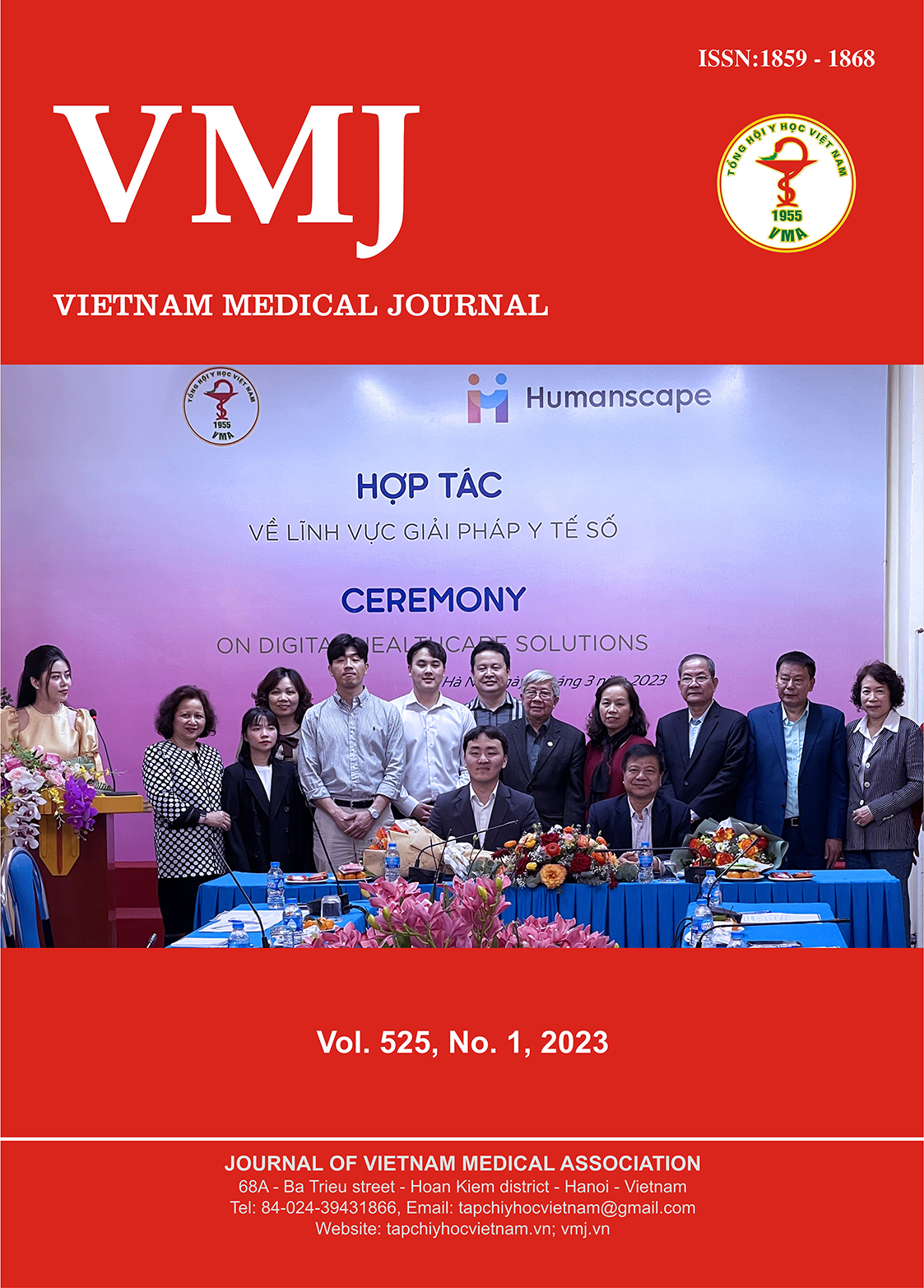EVALUATION THE EFFECTIVENESS OF PHACOEMULSIFICATION COMBINED WITH GONIOSYNECHIALYSIS IN TREATMENT OF CHRONIC PRIMARY ANGLE-CLOSURE GLAUCOMA WITH CATARACT
Main Article Content
Abstract
Objectives: To evaluate the results of phacoemulsification combined with goniosynechialysis on chronic primary angle-closure glaucoma (PACG) with cataract and to demonstrate the factors related to surgical results. Subjects and methods: A prospective descriptive study with no control was conducted on a total of 30 eyes from 27 PACG patients with cataracts, which underwent phacoemulsification combined with goniosynechialysis in Ha Dong Eye Hospital since February 2019 to September 2019. Results: Among 27 patients with 30 eyes in the study group, the absolute success rate was 86.7% and the relative success rate was 13.3%, while there were no patients with treatment failure. Visual acuity increased from 1.01 ± 1.01 before surgery to 0.37 ± 0.94 after surgery. Intraocular pressure decreased from 29.56 ± 3.02 mm Hg to 18.37 ± 2.65 mm Hg. Synechiae decreased from 227.9° ± 34.5° to 46.6° ± 4.5° after 1 month and 54.7°± 8.1° after 3 months. No serious complication was reported, most common complication was anterior chamber exudate (20%) which responded well to treatment and didn’t affect surgical results. Factors related to surgical results included time of disease detection less than 1 year had a success rate 7 times higher than disease detection over 1 year; eyes with anterior chamber angle <180° before surgery had an absolute success rate 2.15 times higher than eyes with anterior chamber angle >180° before surgery. Conclusions: Phacogoniosynechialysis is an effective and safe surgical option for chronic PACG with cataracts.
Article Details
Keywords
phacogoniosynechialysis, glaucoma, cataracts.
References
2. Harasymowycz PJ, Papamatheakis DG, Ahmed I, et al (2005), Phacoemulsification and goniosynechialysis in the management of unresponsive primary angle closure, J Glaucoma 14:186-9.
3. Hayashi K, Hayashi H, Nakao F, Hayashi F (2000) Changes in anterior chamber angle width and depth after intraocular lens implantation in eyes with glaucoma, Ophthalmology 107:698-703.
4. Heijl A, Leske MC, Bengtsson B, et al, (2003), Measuring visual field progression in the Early Manifest Glaucoma Trial, Acta Ophthalmol Scand 81:286-93.
5. Jacobi PC, Dietlein TS, Luke C et al (2002), Primary phacoemulsification and intraocular lens implantation for angle-closure glaucoma, Ophthalmology, 109(9):1597-1603
6. Kurimoto Y, Park M, Sakaue H, Kondo T, (1997), Changes in the anterior chamber configuration after small-incision cataract surgery with posterior chamber intraocular lens implantation. Am J Ophthalmol 124:775-80.
7. Lee JY, Kim YY, Jung HR, (2006), Distribution and characteristics of peripheral anterior synechiae in primary angle-closure glaucoma, Korea J ophthalmology, 20(2) 104-8
8. Lowe RF (1970), Aetiology of the anatomical basis for primary angle closure glaucoma. Br J Ophthalmol 54: 161-9
9. Mapstone R, (1974) Precipitation of angle closure. Br J Ophthal- mol. 58:36--54
10. Markowitz SN, Morin JD, (1984), Angle-closure glaucoma: relation between lens thickness, anterior chamber depth and age. Can J Opthalmol 19:300-2


